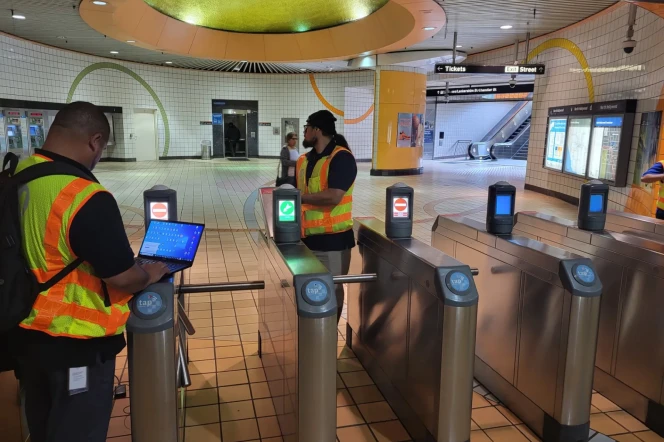With our free press under threat and federal funding for public media gone, your support matters more than ever. Help keep the LAist newsroom strong, become a monthly member or increase your support today.
How the 101 freeway is changing the way our local wild animals evolve

Hike through the Santa Monica Mountains and you'll come across an array of animals: lizards, foxes, frogs and bobcats are just a few.
Say you managed to capture a couple of adult, male western fence lizards: one from the north side of the 101, and another from the south side. If you placed them next to each other you likely wouldn't be able to tell the difference. They'd be around the same size, shape and color (they're the same species after all). But analyze their DNA and you would see genetic variations buried deep down. Variations that could indicate bigger evolutionary changes to come.
That's exactly what researchers from UCLA found when they analyzed the DNA of seven different species of animals from different parts of the Santa Monica mountains. And in a new paper published in the journal Conservation Biology, they write that the 101 freeway is a major reason those genetic variations are there.
"The 101 is a major barrier to populations moving within the habitat in the Southern California region," said Ryan Harrigan, professor at UCLA and co-author of the study. "When you have a single population and it's bifurcated or split in some way, that's what allows unique genetic differences to end up on either side of it."
The DNA that Harrigan and his colleagues analyzed came from different groups of the same species of animals, including the western skink, western fence lizard, side-blotched lizard, wrentit, pacific tree frog, gray fox and bobcat. Each species lived on both sides of the 101.
“The fact that we have already observed and recorded genetic differences between the north and south of the 101 populations means that those things are not moving across that highway often," said Harrigan. "This is the sort of stuff of evolution."
It's a process called allopatric speciation. When different groups of a species are separated by some sort of obstacle, be it man made or environmental, they stop mating with one another. They then begin to adapt to their new environments over many generations, eventually diverging genetically from one another.
"You can get four, five, six different populations with their own genetic signatures, just based on which valley you might be in, or which mountain range you might be in," Harrigan said. "It shows that that Southern California region, both north and south of the 101 ... still harbors a lot of genetic variation based on the sort of individual locations that those populations are in."
He said that the high number of genetic variations could indicate that the groups throughout the Santa Monica Mountains have been separated for a long time. Considering the 101 was built in the 1950s, it's possible that the separation happened back then, as it became difficult for one group to migrate to the other side of the construction.
The authors also point out that the long term consequences of restricted movement due to the 101 could also be a concern. As climate change continues to take its toll, and temperatures continue to rise, species that are unable to move to more favorable microclimates could be in trouble.








